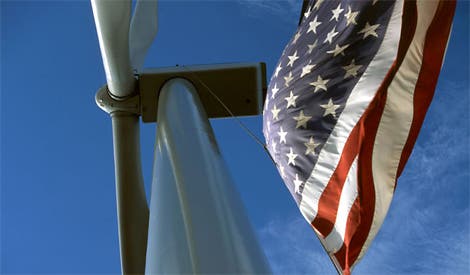It’s the main argument against renewable energy – sure, they’re environmentally friendly, they’re sustainable, they have very little emissions… but they’re expensive. But while that is already no longer true in many parts of the world, it may also not be true in America – where solar and wind energy are starting to overcome conventional fuels in terms of price.

The cost of oil, coal and gas has steadily climbed in past years, but the major change is caused by the price of renewables, which has dropped at a fantastic rate. In some markets in the US, the tipping point where the price of renewable energy equals that of conventional energy has already been reached. This was made possible by subsidies which may or may not be continued, but recent analyses conclude that even without those subsidies, alternative energy can often compete.
Texas, one of the biggest oil producers in the States, has developed a deal which will provide 20 years of output from a solar farm at less than 5 cents a kilowatt-hour. In September, the Grand River Dam Authority in Oklahoma announced its approval of a new agreement to buy power from a new wind farm expected to be completed next year. It’s like Christmas for wind energy – everywhere you go, it’s there, and it’s cheap.
“Wind was on sale — it was a Blue Light Special,” said Jay Godfrey, managing director of renewable energy for the company. He noted that Oklahoma, unlike many states, did not require utilities to buy power from renewable sources. “We were doing it because it made sense for our ratepayers,” he said.
But how low are prices actually going at a national level? A new analysis conducted by the investment banking firm Lazard showed that with subsidies, solar energy costs on average 5.6 cents a kilowatt-hour, and wind is as low as 1.4 cents. Just so you can get an idea, the cost of energy from natural gas is 6.1 cents a kilowatt-hour on the low end and coal comes at 6.6 cents. But even without subsidies, wind is really cheap. Without subsidies, solar comes in at 7.2 cents a kilowatt-hour at the low end, with wind at 3.7 cents – competitive to say the least.
“It is really quite notable, when compared to where we were just five years ago, to see the decline in the cost of these technologies,” said Jonathan Mir, a managing director at Lazard, which has been comparing the economics of power generation technologies since 2008.
However, while this is really good news, renewables won’t be replacing oil and gas anytime soon – the other big remaining problem is availability.
“You can’t dispatch it when you want to,” said Khalil Shalabi, vice president for energy market operations and resource planning at Austin Energy, which is why the utility, like others, still sees value in combined-cycle gas plants, even though they may cost more. Nonetheless, he said, executives were surprised to see how far solar prices had fallen. “Renewables had two issues: One, they were too expensive, and they weren’t dispatchable. They’re not too expensive anymore.”
Lazard’s analysis also found that residential-scale solar PV (rooftop solar panels) remains considerably more expensive than utility-scale solar PV and that while offshore wind energy also continues to become cheaper, it’s still not competitive, when compared to land generated wind energy.
You can read Lazard’s full analysis here.






